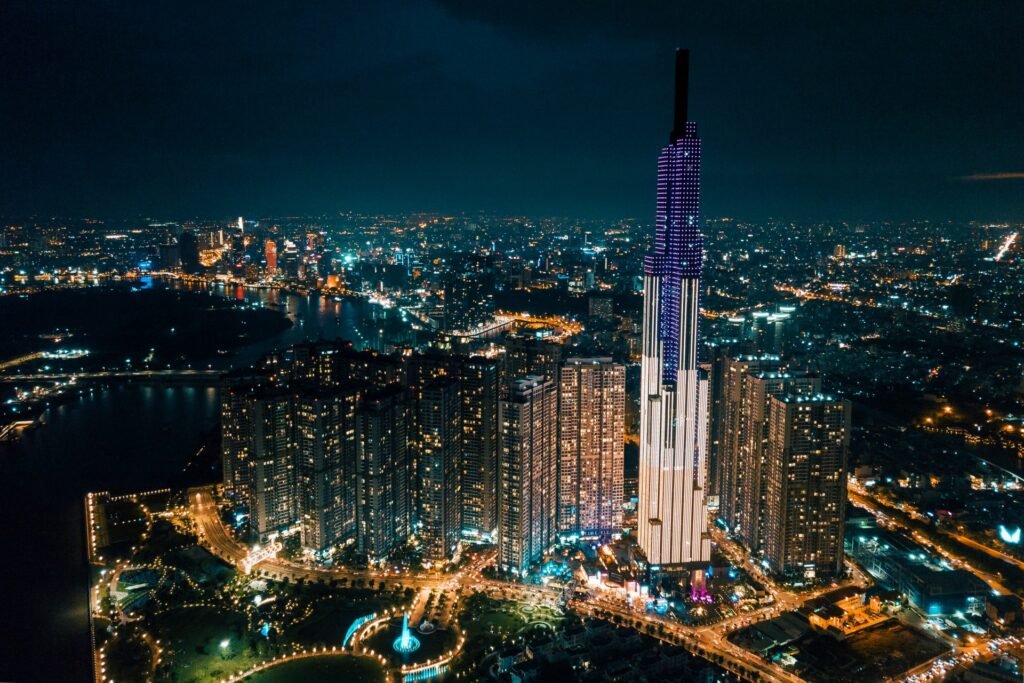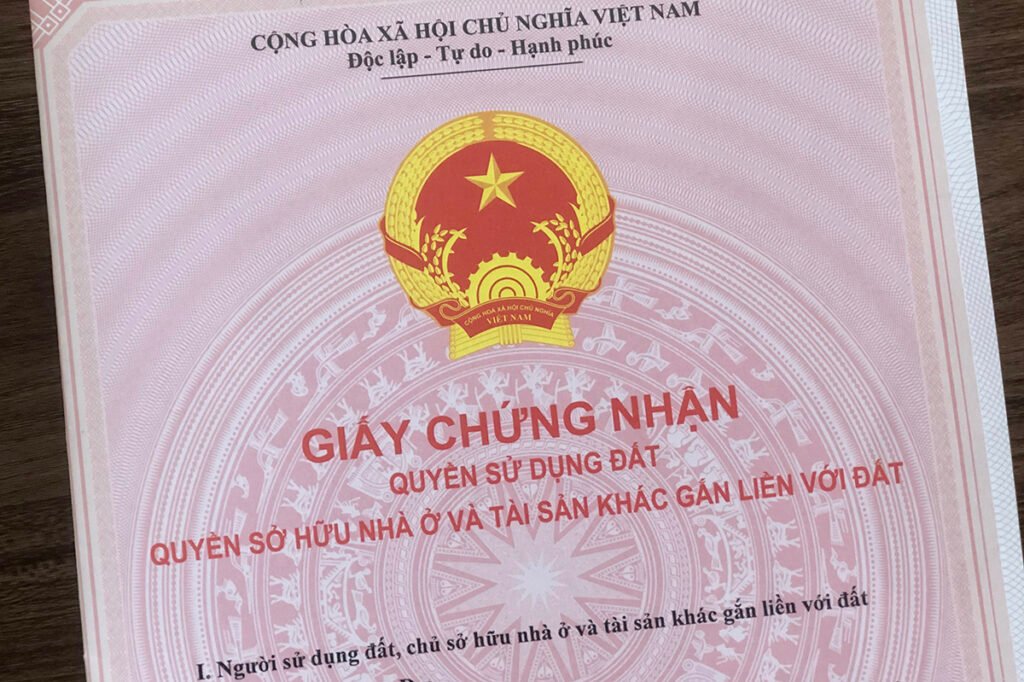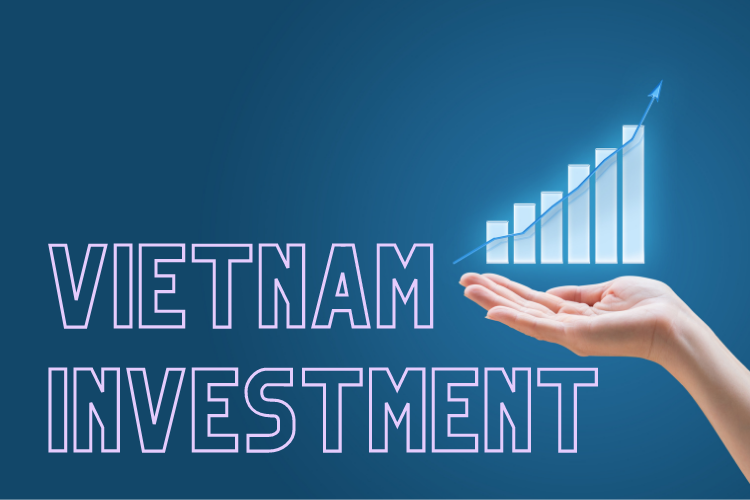Looking for smart places to grow your money in Asia? Vietnam is now one of the most exciting spots for real estate. Cities here are booming with new homes, offices, and tourist spaces. But where should you look first?
This guide shows the top cities in Vietnam for real estate investment. What makes each city special? How do laws work for foreign investors? Read now and explore your best choices!
Why Vietnam is a Hotspot for Real Estate Investment in 2025

1. Vietnam is a hotspot for real estate investment
Why is Vietnam growing so fast? Vietnam’s strong economy and smart policies make it a top choice for foreign investors in the real estate sector.
Rapid Foreign Investment in Real Estate
According to a report of the General Statistics Office, foreign direct investment in Vietnam hit a new peak in 2024. Real estate FDI reached $3.72 billion, which was 18.8 % of total FDI, second only to manufacturing. Registered FDI in real estate climbed 89% year‑on‑year, totalling $5.63 billion by November.
In Q1 2025, real estate FDI grew 46%, reaching nearly $2.4 billion. These numbers prove strong trust of foreign investors.
Infrastructure and Urban Growth
Major infrastructure projects lift demand and prices. Metro lines in Ho Chi Minh City boost nearby land values by 15–20%. The North–South high‑speed rail (under Resolution No. 106/NQ-CP) and Long Thanh International Airport are due to open in 2026. This will improve connectivity across regions. More roads and transit nodes draw more people to cities.
Rising Urban Population and Middle Class
According to Statista’s report, Vietnam had over 100 million people in 2024, with more than half under 35 years old. In many cities (Ho Chi Minh City, Da Nang, Hanoi), urban growth drives demand for housing and office space.
The International Trade Administration reported that the middle-income class reached 13 million in 2021. This fuelled growth in e‑commerce and logistics real estate. Demand now outpaces supply in many urban zones.
Policy Reforms and Friendly Business Climate
New property and housing laws simplified foreign buying rules. The Vietnamese government restructures ministries and speeds project approvals.
Local authorities in some places (Hanoi, HCMC, Binh Duong, Dong Nai, Ba Ria–Vung Tau) opened land auctions in early 2025. Legal clarity and ease of access attract global investors.
Data Centre Growth and New Asset Classes
Real estate now includes high‑yield assets like data centres. In a report, Cushman & Wakefield stated that Vietnam ranked second in Asia‑Pacific for data centre investment returns in 2025, with yields of 17.5–18.8%, just behind Singapore.
Large hyperscale projects in Ho Chi Minh City and Hanoi show new investment channels beyond housing and office.
Top Cities in Vietnam to Buy Real Estate in 2025

2. Top Cities in Vietnam to buy real estate
Vietnam has many growing cities. Each one offers something different for investors. Let’s look at the best cities to invest in Vietnam now.
#1. Ho Chi Minh City (Saigon)
| Factor | Key Data |
| Price per sqm | US$3,200–5,200 |
| Price growth YoY | ~6 % |
| Transit access | Metro lines, expressways, Long Thanh airport |
| Rental yield | ~2.8 % |
| Suburban alternative | Binh Duong: ~US$1,900/sqm |
| New supply forecast | 17 central projects; ~7–8k suburban units |
Ho Chi Minh City remains Vietnam’s biggest economic hub. Apartment prices range from US$3,200 to 5,200/sqm in 2025, up about 6% since the end of 2024. Some properties along Metro Line 1 rose by up to 20% YoY.
Retail space occupancy is 93.6%, with average rent about US$53/sqm/month. The retail supply is still limited; about 38,000 sqm new in 2025 and 80,000 sqm expected by 2028.
FDI inflow stays strong. Social housing and premium condo projects proceed steadily. Foreign investors find stable demand for offices, retail, and hotels.
Major infrastructure projects fuel growth. Examples are new metro lines, expressways, the future Long Thanh airport, and the regional merger with Binh Duong and Ba Ria–Vung Tau from July 1, 2025, turning the area into a megacity zone with a $110 billion economy.
Suburban areas gain appeal. Prices in Binh Duong and adjacent zones stay within VND50‑60 million (about $1,900) per sqm, far below Saigon CBD averages of ~VND150‑200 million (about $6,200–8,300).
Demand outpaces new launches. Meager new condo supply (about 7,000–8,000 units south of the city core) keeps liquidity tight, with strong resale and upward price momentum.
#2. Hanoi
| Factor | Key Data |
| Price per sqm | US$2,547 |
| Price growth YoY | +22.3 % |
| Primary supply | ~6,800 units (Q3 2024), rising toward 8k |
| Industrial growth | Corridor to Hai Phong, new offices & parks |
| Rental demand | Stable from business and foreign sectors |
| Expansion zones | Ring roads, Hanoi–Hai Phong boost satellite potential |
According to JLL’s report, Hanoi’s apartment market rebounded strongly in 2024. By Q3 2024, the average price was US$2,547/sqm, up 22.3% YoY. North‑south demand pushed transaction volume. Savills Research reported that primary apartment sales rose 226% YoY to about 6,840 units in Q3 2024.
Supply will ramp up in Q2–Q3 2025. Data firm One Mount forecasts 8,000+ new units by mid‑2025. Cushman & Wakefield predicts that office supply expands along the Hanoi–Hai Phong corridor, with a projected 3.2 m sqm by 2033.
Rental demand remains firm due to government offices, NGOs, and foreign firms. Industrial real estate near Hai Phong boosts demand for housing, too.
Livable districts and satellite zones benefit from infrastructure upgrades like ring roads and new rail links.
Market stability is key: post‑pandemic correction slowed price surges, but steady growth continues under improving laws and credit availability.
#3. Da Nang
| Factor | Key Data |
| New launches | 3,200 units (2024) |
| Sales volume YoY | +4.7× vs 2023 |
| Market trend | Recovery with modest price gains |
| Drivers | Tourism, urban policy, coastal projects |
| Price vs major cities | Lower base; good growth potential |
| Target investors | Resort housing, mixed‑use coastal assets |
Da Nang recovered in 2024–25. Apartment launches rose sharply. From early 2024 to late 2024, 3,200 new units launched, and sales hit 2,600 units, four times the 2023 levels.
Savills’ Q2 2025 report shows a positive rebound in residential demand. Apartment prices remain stable and growing slightly year‑on‑year.
Tourism lifts the short‑term rental and resort real estate sectors. Visitor numbers keep resort property sales buoyant.
Infrastructure and public policies support expansion. Da Nang invests in urban zones, roads, coastal development, and tourism assets.
Investors see Da Nang as a balance of lifestyle and capital growth, with a lower price base than Hanoi or HCMC. The city suits M&A investors targeting mid-to-long-term gains in coastal and tourism‑focused properties.
#4. Binh Duong
| Factor | Key Data |
| Price per sqm | ~VND50‑60 m / (~US$1,900) |
| Rent yield | ~4.1 % |
| Growth forecast | Econ growth ~10 % |
| Integration | Now part of the HCMC mega‑city |
| Supply volume | 4,100 units by early 2025 |
| Investor appeal | Suburban new builds with strong liquidity |
Binh Duong transformed into a hot suburban alternative to HCMC. In early 2025, the absorption of new condos surged.
The first five months saw 1,500 luxury units priced at VND50‑60 m/sqm and 2,600 units in Di An at VND45‑50 m/sqm (about $1,900/sqm). Rental yields reached 4.1%, above HCMC yields (about 2.8%).
Economic growth targets stand high at 10 percent for 2025, backed by major industrial and urban plans. This zone merged into HCMC in July 2025, forming part of a megacity with high investor interest.
Infrastructure improvements include metro corridor links, ring roads, and new urban planning. Developers accelerate suburban projects to match demand.
Cost remains affordable. High liquidity and quick sales make it ideal for yield‑focused strategies.
#5. Nha Trang
| Factor | Key Data |
| New supply (2024 H1) | ~3,100 condotel units (+51 % YoY) |
| Sales growth | ~7× vs 2023 |
| Visitor base | High tourism demand |
| Price level | Lower base; rising with recovery |
| Rental model | Seasonal yields from resorts |
| Investment angle | Early‑entry tourism land, and hospitality |
Nha Trang regained momentum in 2024. Condotel supply rose 51% YoY, with about 3,100 new units in H1 2024, double the previous year. Resort‑style property sales jumped sevenfold over 2023 levels.
The city remains a top beach tourism hub. Visitor numbers support short‑stay rental demand in resorts and branded residences.
Yields vary. Luxury condotels deliver high rental revenue in the tourist season. Long‑term returns depend on the tourism mix and occupancy.
Prices remain lower than those in Da Nang and coastal luxury zones in the south. Early investment offers high future value as hospitality recovers. Key infrastructure, such as airport upgrades and improved coastal roads, boosts access.
This destination is ideal for buyers focusing on resort lifestyle, hospitality assets, or eco‑resort projects.
#6. Hai Phong
| Factor | Key Data |
| Industrial rent | ~$137/sqm (north Vietnam avg.) |
| Public investment | VND22 trillion in 2023 |
| Infrastructure | Ports, roads, ring roads, bridges |
| Office supply forecast | ~3.2 m sqm by 2033 |
| Housing demand | Linked to industrial growth |
| Price level | Lower than Hanoi, rising with demand |
Hai Phong emerged as a northern logistics hub. Its deep‑sea port (Lach Huyen) and expressway links support export‑oriented industrial growth.
Industrial real estate rental in the north reached US$137/sqm by end‑2024, up 4.2 % YoY. According to Savills’s report, public investment exceeded VND22 trillion in 2023, backing major infrastructure like ports, bridges, expressways, and related urban zones.
The northern corridor sees growing office and residential demand. Cushman & Wakefield forecasts that up to 3.2 million sqm of new office space will be available by 2033 along the Hanoi–Hai Phong axis.
Residential zones develop near industrial parks and new transit routes. The city offers more affordable land than Hanoi, with strong growth potential.
In general, Hai Phong is attractive to logistics‑oriented investors or buyers targeting export infrastructure spillover.
#7. Ba Ria – Vung Tau
| Factor | Key Data |
| Investment inflow | +40 % capital in H1 2025 |
| Tourism earnings | VND5.08 trillion (~US$196 M) |
| Infrastructure | Expressway, light rail, port access |
| Integration | Merged into the HCMC mega city zone |
| Property segments | Resorts, logistics housing, coastal assets |
| Growth outlook | Rapid regional urban development |
Ba Ria–Vung Tau joined HCMC in June 2025. This region now becomes part of a megacity corridor with strong growth plans.
Investment capital surged nearly 40 % in H1 2025, with VND30,319 trillion registered, driven by industrial and logistics expansions.
Major infrastructure includes the Bien Hoa–Vung Tau Expressway, Phuoc An Bridge, coastal roads, and a planned light rail to HCMC and Dong Nai.
Tourism adds value. Q1 2025 tourism revenue topped VND5.08 trillion (about $196 million) with over 4.5 million arrivals.
Industrial park growth in this area also supports housing and logistics properties. Port‑related warehousing and workforce housing gain appeal.
This city offers a blend: coastal resorts, industrial‑linked housing, and short‑term rental markets. Lower land cost, rising connectivity, and strong yield potential.
Legal Guide for Foreigners Buying Property in Vietnam

3. Legal real estate guide for foreigners
Vietnam’s real estate laws have changed a lot in recent years. So, foreigners exploring Vietnam real estate investment should learn about the law before buying.
Eligibility and Ownership Limits
According to Housing Law (2014, amended in 2025), foreign individuals who hold a valid passport and enter Vietnam legally may buy residential property.
Foreign organizations that invest in housing projects also qualify. However, buying land is not allowed.
Ownership limits apply:
- Up to 30% of apartments in a condominium building.
- Up to 250 landed houses (villas or townhouses) per administrative ward.
Foreigners married to Vietnamese citizens may hold ownership indefinitely, like local citizens.
Lease Terms and Renewal
Foreigners cannot own land. All land belongs to the state. Buyers gain a 50-year leasehold for residential land. The lease is renewable under certain conditions.
Overseas Vietnamese may obtain land use rights after 2025 with more favorable treatment under the new Land Law.
Key Laws and Recent Changes
Major reforms took effect on January 1, 2025. New Land, Housing, and Real Estate Business Laws simplify property rules and increase transparency and foreign access
The 2024 Land Law introduces:
- Annual land-price tables.
- Option to pay land rent upfront or annually.
- Clear rules for foreign-invested enterprises (FIEs) in industrial zones
Foreign investors can now buy assets attached to land under annual rent structures more easily. These changes cut red tape and speed approvals.
Buying Steps and Costs
Foreign buyers should:
- Work with a local lawyer who is fluent in English and Vietnamese.
- Prepare finances.
- Check legal titles (Land Use Right Certificate, LURC).
- Complete a sales contract and pay a deposit.
Foreign buyers should expect several fees:
- VAT: 10% for commercial housing (social housing is 5%)
- Land registration fee: 0.5% of property value
- Maintenance/service fee: about 2% per year for apartments
- Income tax on resale: 2%
- Rental income tax: 10% of net rental income
Notary fees vary by property value but often stay below VND 10 million. Additional legal costs include property agent fees and lawyer service charges.
Risks and Legal Safeguards
Foreign buyers should avoid:
- Projects without proper LURC and title certificates
- Developers lacking a good track record
- Currency risk from transactions in Vietnamese Dong
- Quota limits already reached in popular buildings
- Lease expiry without renewal
Foreign buyers must have independent legal counsel in English and Vietnamese. Confirm a developer’s guarantee for off‑plan units. Check that the pink book is valid and that ownership fits the quota rules.
Best Real Estate Investment Strategies by City Type in Vietnam

4. Investment strategies for foreigners
Foreigners should have smart strategies before making a Vietnam real estate investment.
Urban Growth Hubs: Ho Chi Minh City & Hanoi
Focus on high-end apartments, premium offices, or mixed-use towers in prime urban zones.
In late 2024, apartment prices in HCMC ranged from VND72 to 142 million/sqm (about $2,830–5,590) in high-end projects, showing strong demand for quality properties.
In Hanoi, prices hit VND70 million (about $2,600)/sqm in Q3 2024. Growth stayed steady into Q4 with 2 to 4% quarterly gains.
According to Cushman & Wakefield, the best returns come from office-property M&A and luxury residential deals near transit lines like Thu Thiem in HCMC or Tay Ho Tay district in Hanoi.
Industrial & Logistics Real Estate: Binh Duong, Hai Phong, Ba Ria–Vung Tau
Industrial parks deliver strong yields. FIFO growth in Vietnam in 2024 real estate FDI hit $6.3 billion, 16.5 % of total FDI.
Investors seek land near ports and transport corridors. Key zones include Binh Duong near HCMC, Hai Phong in the north, and Ba Ria–Vung Tau coastal belt.
M&A activity in 2025 targets logistics assets and industrial clusters. Recent deals include large land stakes in Binh Duong and Hai Phong, with Japanese and Singapore funds active.
Tourism & Resort Real Estate: Nha Trang and Coastal Zones
Resort markets bounce back with villa and condotel projects. Foreign-backed golf and hotel complexes are under development near Hanoi and HCMC, such as the $1.5B golf resort by the Trump Organization in northern Vietnam, expected to open by mid‑2027.
With booming tourist rentals, Nha Trang saw the condotel supply rise by ~51% in H1 2024. This destination offers condo resorts, though yields vary by season. Tourist inflow supports strong short‑stay rental returns and value pick‑up.
More information:
* Can Foreigners Buy Property in Vietnam?
* Industries Attracting the Most M&A Activity in Vietnam
* M&A in Vietnam: A Foreigner’s Guide to Legal & Regulatory Frameworks
FAQs
1. How much does one square meter cost in major cities?
Apartment prices in Hanoi hit about $2,865/sqm in Q1 2025, up nearly 30% from the previous year. Ho Chi Minh City prices stand around $3,148–3,200/sqm, growing modestly YOY.
2. Are foreigners allowed to rent out their Vietnamese property?
Yes. Foreigners may lease out property they legally own. They must notify local housing authorities and pay income tax if rental income exceeds VND 100 million (about $4,000) per year. Rental contracts must register with the police within 24 hours to comply with the law.
3. What are the taxes and fees when buying property in Vietnam?
Foreign buyers will incur property transfer tax at 2 percent of the sale price or market value. The buyer or the seller pays for it. It depends on the agreement.
Other costs include VAT (5–10%) on new housing, land registration tax (about 0.5%), service/maintenance fees (about 2%), and notary fees (about VND 10 million ≈ $400).
4. What is the safest way for foreigners to buy property?
The foreigners should:
- Confirm the property has a valid “Pink Book” ownership certificate
- Engage independent legal counsel not linked to developers
- Check the foreigner ownership quota in the building (max 30 %)
- Avoid buying in restricted security or defense areas
Final thoughts
Vietnam offers some of Asia’s most exciting property opportunities in 2025. Smart laws, rising incomes, and large infrastructure plans support rapid real estate growth.
Investors should focus on the top cities in Vietnam for real estate investment, like Ho Chi Minh City, Hanoi, and Da Nang.
Want better returns? Explore key zones and act before prices rise further.




